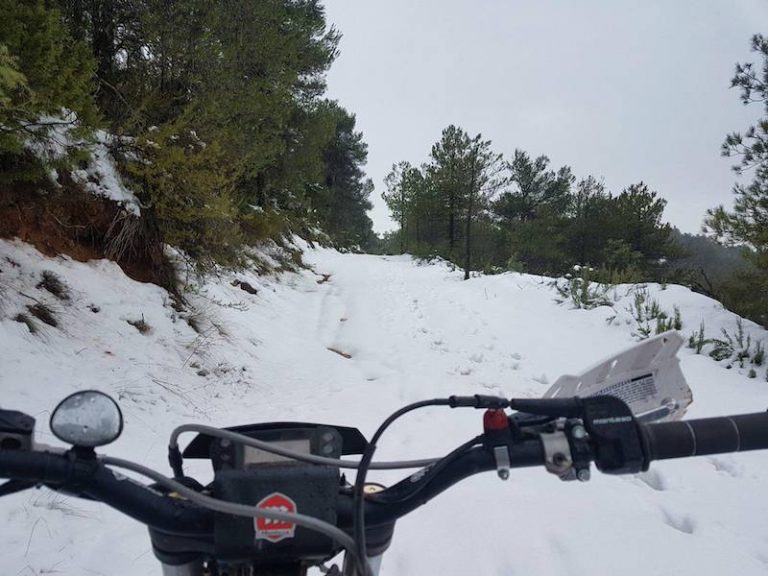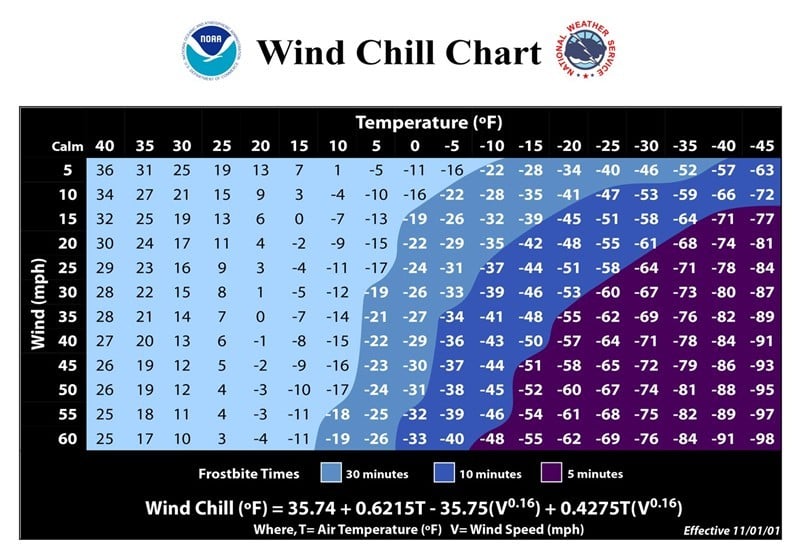Just because we’re heading in to winter it doesn’t mean you have to put the bike away until the trees start to bud next spring. Sure, it’s cold, it gets dark earlier and it can often be wet but, for me, there are few things better than going for a crisp winter ride when the air’s fresh and the chill of the wind hitting your face invigorates you.
If you’re unprepared, it can be pretty miserable, but take the right measures and riding in low temperatures is a delight. But how do you ensure you’re kept warm and comfortable on a winter ride? Well, there are a number of products on the market that’ll help you in the fight against the cold, and we’ve teamed up with Gerbing, a company that specialises in manufacturing heated clothing, to help make sure you’re snug the next time you head out for a ride in the cold.
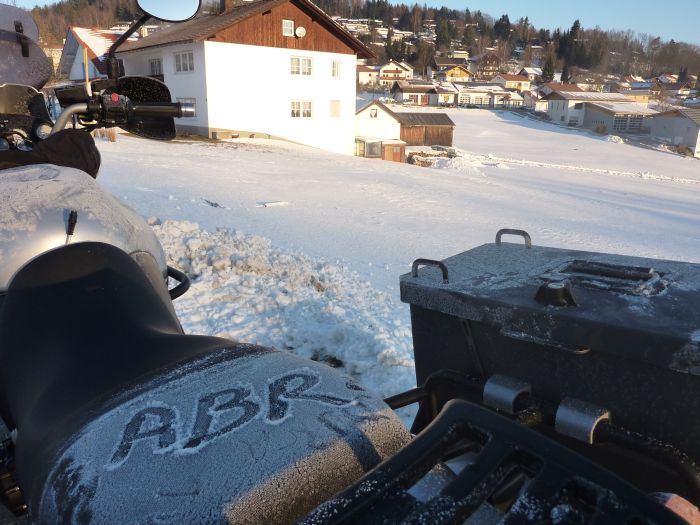
Motorcycle accessories to keep you warm
Before we get down to clothing that’ll keep you warm, it’s worth looking at a few little modifications that you can do to your bike to help shield yourself from cold temperatures and freezing wind chill.
It’s worth mentioning that a big part of keeping warm on a bike is limiting the effect of wind chill, the perceived decrease in air temperature caused by the flow of air. There’s a lot of interesting reading on the subject (Bike Bandit has a great feature on the subject) but to put it in to perspective, check out the graph below, and remember that wind speed isn’t only affected by natural causes, but also how fast you’re riding.
Heated Grips
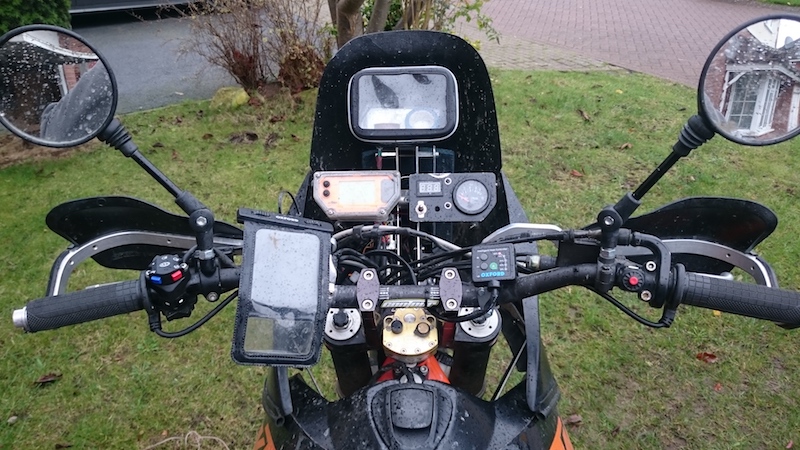
Oxford Products Hothands fitted to a KTM
I’m of the opinion that no bike should be branded an adventure or touring bike without heated grips fitted as standard. The clue is in the name as to what these do, and they should be one of your first ports of call when you’re decking your bike out for winter. Essentially, they use the bike’s battery to heat elements under your grips, which in turn provide heat for the inside of your hand. If your bike doesn’t come with them as standard, you’ll need to go about removing your old grips and installing the heated ones, though it’s a simple task that requires few tools, and you can follow our complete guide to installing heated grips.
>>> Related: How to keep your bike in top condition during the winter
Upgrade your screen
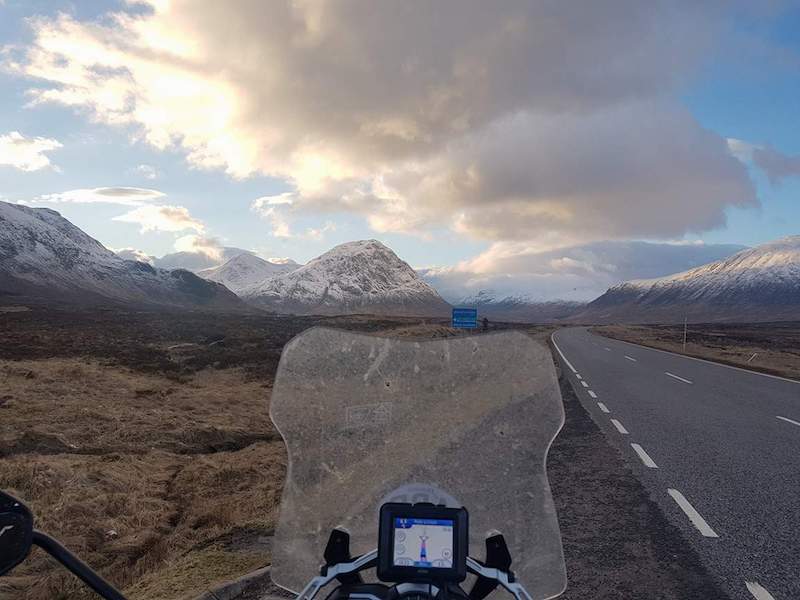
A decent screen can make a world of difference in the winter. Wind chill is one of the biggest factors in making you cold in the saddle, and a good screen will help to direct air away from you when riding. If you’d rather not splash the cash on a whole screen replacement, consider fitting an aftermarket spoiler which will do a good job at a smaller, more reasonable price.
A good screen is not just something that’s useful in winter either. Deflecting oncoming air around the rider will improve comfort over long distance and also help reduce noise levels inside your helmet.
Hand guards
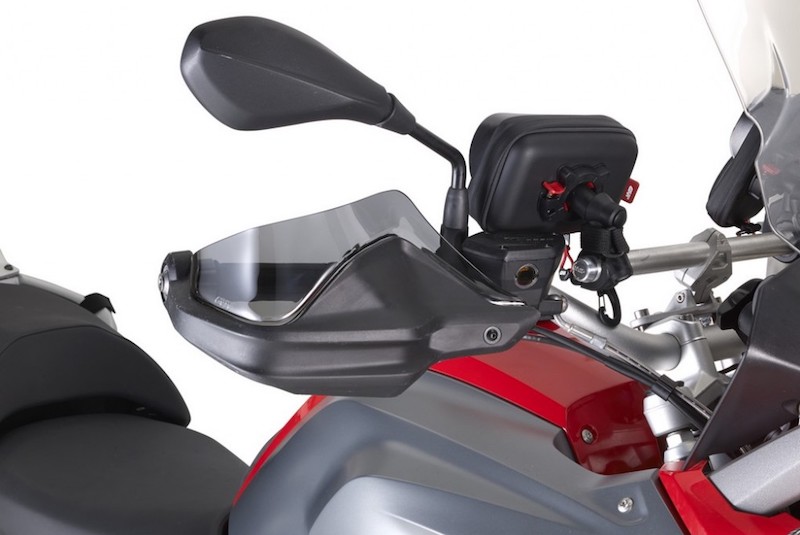
Like heated grips, hand guards really should come as standard on touring and adventure bikes. While the grips will keep the insides of your hands warm, hand guards will help keep the wind chill off the outsides of them. Aftermarket products are simple to fit and make a huge difference in use, just make sure they’re of a decent size and are positioned correctly to block the wind.
Hand guard extensions, as seen in the image above, are a great way of adding even more wind protection.
Bar Muffs
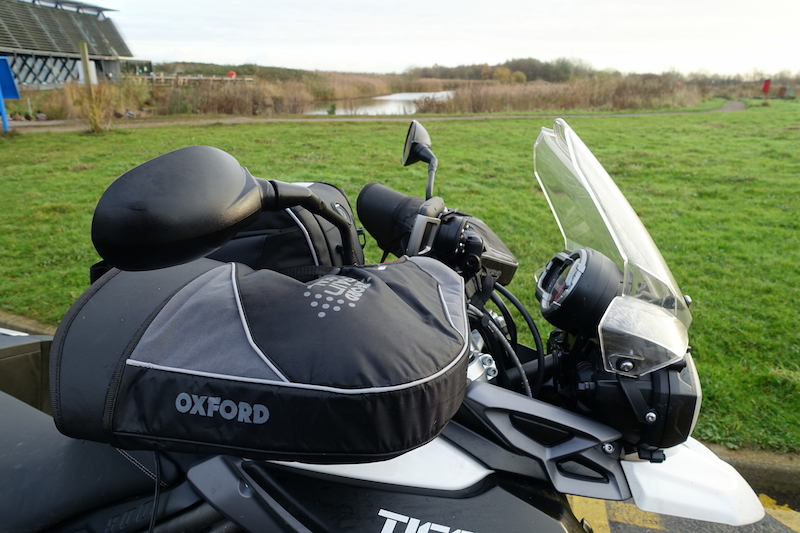
If you’re going to be riding in seriously cold temperatures, bar muffs are a very worthwhile addition. They don’t look sexy, but this is a real case of function above fashion. Good ones will block the wind completely, and the heat from your hands and heated grips will help warm up the air inside of them. They’re also usually fully waterproof, keeping your hands dry and protected from the weather.
They’ll feel a little alien at first, and if you’re not used to your bike’s controls, it’s a bit of a lucky dip when you’re trying to put your lights on full beam or use the indicators, but I can’t recommend them enough.
Heated seat/sheep skin seat cover
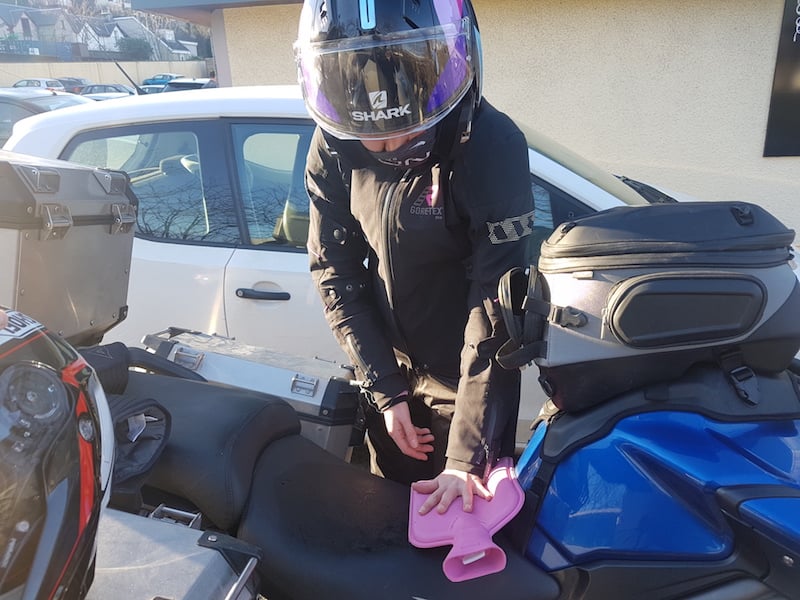
An unconventional method of heating your seat!
Mention a heated seat to most riders and they’ll scoff at your ludicrous suggestion, but having ridden the Triumph Explorer with its heated seat in the Scottish winter, I can say with confidence they don’t know what they’re missing. The extra warmth isn’t only to keep your tush toasty, it helps keep your core body temperature up. Sheep skin seat covers perform a similar task without the drain on your bike’s juice.
Motorcycle clothing to keep you warm in the winter
Neck tube
It’s amazing how much warmer a simple neck tube can make you feel. I wear one year-round to stop jackets chaffing my neck, but when it comes to winter riding they’re excellent for keeping the wind off your exposed skin. Look for a wind proof one and you’ll be gold, while there are more technical examples available these days that come with Primaloft fibres in them to provide extra warmth.
Correct layering
The importance of correctly layering your clothes cannot be understated. Oftentimes, it’s all too easy to throw your jacket over your cotton t-shirt and ride off with the expectation that you’ll be kept warm. The reality is that technical fabrics which are designed to be worn as part of a layering system are worth taking seriously if you want to keep warm and dry on a bike ride.
Starting with your base layer, you’ll want a garment that’s been designed to wick moisture away from the body and, to keep you warmer, look for winter weight examples. Merino wool is expensive, but the insulating properties of a winter weight merino wool base layer are worth the extra expense.
Your mid-layer should also help wick moisture away from the body (the further your sweat gets from your skin, the better), while also accounting for the bulk of your clothing’s insulating properties. For winter riding, I often find that the thermal linings that come as standard in most motorcycle jackets are inadequate, and substitute them for a more performance-focussed mid layer that you’d be more likely to find in an outdoor pursuits shop than a motorcycle dealership. Rab does some fantastic insulated jackets, as do Montane.
Gloves
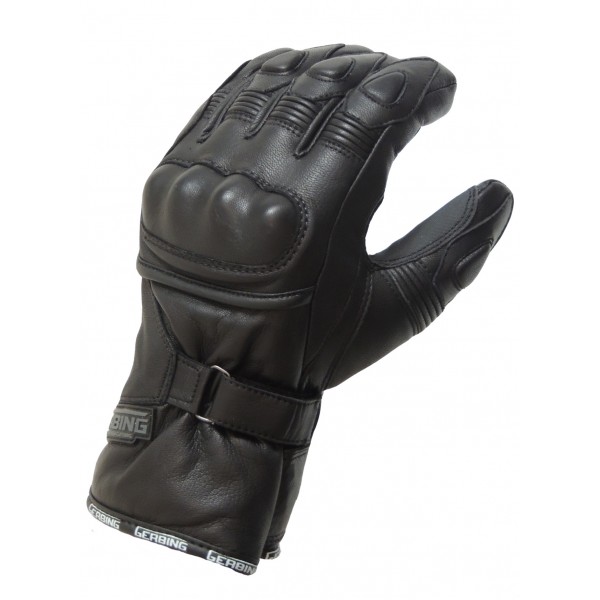
Along with heated grips and hand guards, gloves that are up to the job will make your time on the bike this winter so much more bearable. Unlike summer gloves, winter riding gloves will be fully waterproof (thanks to a waterproof lining or bonded waterproof membrane) and they’ll also feature an insulating fill, such as Thinsulate, which will help keep your hands warm. Of course, good winter motorcycle gloves will also offer armour for protection if you’re unlucky enough to come off your bike.
There’s a good chance that you’ll find winter gloves, particularly those with ample amounts of insulation in them, chunky and detrimental to dexterity, making it tricky to operate your bike’s controls, so be wary of this when buying.
>>> Related: Winter motorcycle gloves buying guide
Heated gloves go the extra mile in keeping your hands warm, and if you’re going to be spending long amounts of time in the cold, they’re well worth the extra expense. They also tend to require less insulating fill, meaning they’re not as cumbersome and are less of a faff to wear. Gerbing’s XRS12 Heated Gloves are a fantastic example of such kit. They’re fully featured from a safety perspective, and they’re water and wind proof. They work by heating up wires which run down the length of each finger and thumb, as well as on the back of the hands, meaning that you’ll get a great amount of all-round warmth. They’ll need to be wired in to the bike to draw their power, though it’s a simple job to do, and they also come with a temperature controller.
If you’d rather not deal with wiring your gloves into the bike, then the Gerbing XR7 Battery Heated Motorcycle Gloves are a great alternative. They offer exceptional levels of warmth, and work in much the same way as wired heated gloves, but they draw power from a rechargeable battery pack that slots neatly into the cuff.
Heated jackets
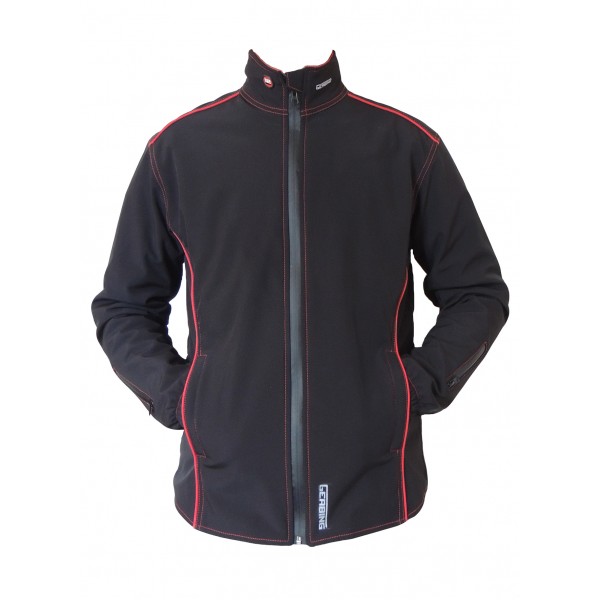
When you’re sat on a bike you’re going to be moving very little, and this lack of movement means that your body is going to be producing a limited amount of heat. Insulated mid-layers are all fine and dandy, but they work by trapping air and using your body heat to warm them up. A heated liner effectively lights a furnace inside your bike jacket which will heat up the air that’s trapped between your layers, keeping you warmer than you’d be able to get without one.
Simply wire them into your bike’s battery (though some have their own battery pack) and they warm up in no time, keeping you toasty when the temperatures plummet. In the past, I’ve had nothing but positive experiences when wearing Gerbing’s heated jackets, and the 12V Heated Jacket Liner is a very well specced and equipped heated liner.
The 12V Heated Jacket Liner has heating pads on the chest, back, collar and sleeves, and makes use of Thinsulate insulation to keep you as toasty as possible when facing the chill. The jacket can either be wired in to your bike or powered by a battery pack, and they also feature sleeve plugs which allow you to plug heated gloves into them to keep things nice and tidy. So confident is Gerbing in the performance of the 12V Heated Jacket Liner, that they say they’ll guarantee that you will be kept warm even in arctic temperatures. Nice.
Warm socks
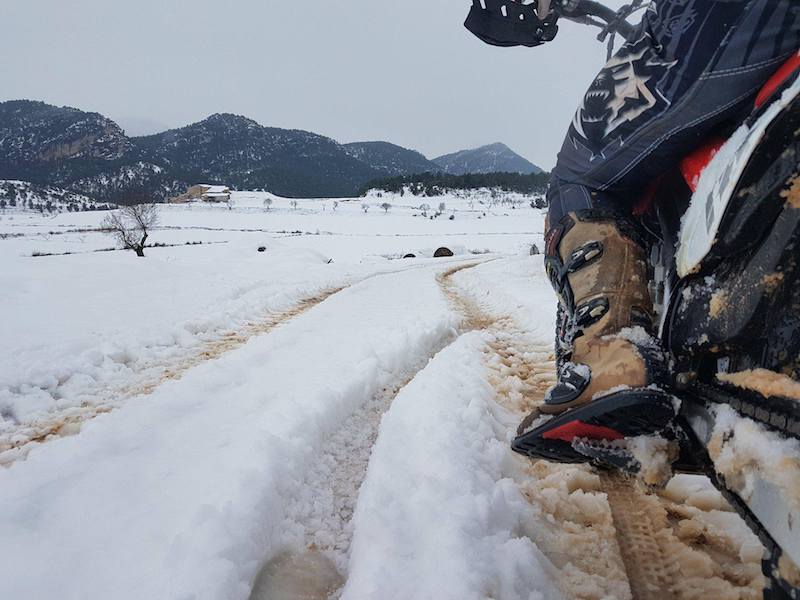
This almost goes without saying. Nice, thick socks will help keep your feet warm while on the bike. There are some motorcycle specific socks out there, though skiing socks do the job just as well, and are usually a little more technical in the fact that they have variable thicknesses and padding around the foot for optimal comfort and moisture wicking. Sweat build-ups in your boots will quickly get cold, so you’ll want to make sure your feet are warm, but not too warm to the point that they perspire excessively.
Heated socks and insoles are worth checking out if you find that you really struggle with cold feet when riding in the winter.
Waterproof overalls
While your textile jackets and trousers will keep the rain at bay (if they’re of decent quality), it’s still worth throwing a set of waterproofs over them. Not only will these prevent your jacket and trousers from absorbing water and effectively turning into fridges as the moisture cools, but they’ll help keep warm air inside your riding kit by providing a great windproof barrier.

